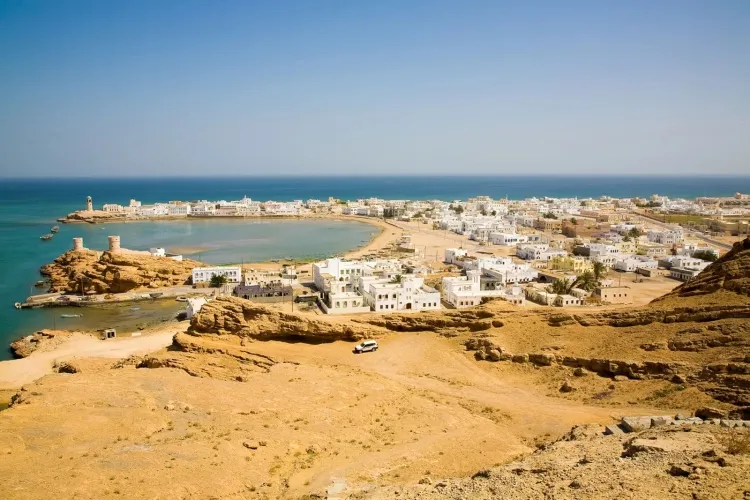The Arabian Sea: A Historical and Geographical Marvel...!!!
The Arabian Sea is a remarkable body of water with a rich history, diverse marine life, and significant economic and strategic importance. Its historical role in trade and cultural exchange, combined with its unique geographical features and biodiversity, make it a fascinating region to explore.

Introduction
The Arabian Sea, an integral part of the northern Indian Ocean, is nestled between the Arabian Peninsula and the Indian subcontinent. Covering an area of approximately 3.86 million square kilometers and reaching a maximum depth of about 4,652 meters, the Arabian Sea is bordered by India to the east, Oman and Yemen to the west, Pakistan and Iran to the north, and the Arabian Peninsula to the northwest. This significant body of water has played a crucial role in maritime trade, cultural exchange, and historical developments throughout the centuries.
Historical Significance
Since ancient times, the Arabian Sea has been a major maritime route, facilitating trade and cultural exchange between the civilizations of the Middle East, Africa, and South Asia. Known to the ancient Greeks and Romans as the "Erythraean Sea," Arab traders dominated the maritime trade routes, connecting the Arabian Peninsula with India and East Africa. The monsoon winds were vital in navigation, enabling ships to sail from the Arabian Peninsula to India and back.
In the medieval period, the Arabian Sea became a crucial link in the spice trade. Indian, Arab, Persian, and African traders exchanged goods such as spices, textiles, precious stones, and ivory. Additionally, the sea route was an essential part of the Silk Road, connecting the East and the West.
Geographical Features
The Arabian Sea is characterized by several prominent geographical features:
-
Gulf of Aden: Located to the west of the Arabian Sea, the Gulf of Aden connects the sea to the Red Sea via the Bab-el-Mandeb Strait. This strategic location has made it a vital maritime route for centuries.
-
Gulf of Oman: Situated to the northwest of the Arabian Sea, the Gulf of Oman connects the sea to the Persian Gulf through the Strait of Hormuz. The Gulf of Oman is crucial for the transportation of oil from the Middle East to the rest of the world.
-
Lakshadweep Islands: This group of islands, located off the southwestern coast of India, forms an archipelago in the Arabian Sea. The islands are known for their stunning coral reefs and rich marine biodiversity.
-
Indus River Delta: The Indus River, one of South Asia's major rivers, flows into the Arabian Sea, forming a vast delta in Pakistan. The delta is a critical region for agriculture and biodiversity.
-
Seychelles and Maldives: These island nations, located in the southwestern part of the Arabian Sea, are famous for their pristine beaches, crystal-clear waters, and unique marine ecosystems.
Marine Life and Biodiversity
The Arabian Sea is home to diverse marine life and rich biodiversity. Coral reefs, mangroves, and seagrass beds provide habitats for various marine species. The sea supports numerous fish species, including tuna, mackerel, and sardines, which are vital for local fisheries.
Marine mammals such as dolphins, whales, and dugongs are also found in the Arabian Sea. The region is home to several species of sea turtles, including the endangered green turtle and hawksbill turtle. The Arabian Sea's unique marine ecosystems are crucial for maintaining global biodiversity.
Economic and Strategic Importance
The Arabian Sea holds significant economic and strategic importance. It serves as a major route for international shipping and trade, connecting the Middle East with Asia, Europe, and Africa. The sea is vital for transporting oil and gas from the Persian Gulf to global markets.
Fisheries in the Arabian Sea provide livelihoods for millions of people in the region. The sea's rich marine resources contribute to the economies of coastal nations. Additionally, tourism, particularly in island nations like the Maldives and Seychelles, plays a significant role in the regional economy.
Environmental Concerns
The Arabian Sea faces several environmental challenges, including overfishing, pollution, and climate change. The increasing demand for marine resources has led to the depletion of fish stocks and the degradation of marine habitats. Pollution from industrial and agricultural activities, along with plastic waste, poses a threat to marine life and ecosystems.
Climate change impacts, such as rising sea temperatures and ocean acidification, are affecting coral reefs and marine biodiversity. Efforts are being made to address these challenges through sustainable fishing practices, conservation initiatives, and international cooperation.
The Arabian Sea is a remarkable body of water with a rich history, diverse marine life, and significant economic and strategic importance. Its historical role in trade and cultural exchange, combined with its unique geographical features and biodiversity, make it a fascinating region to explore. However, addressing environmental challenges and promoting sustainable practices are essential to preserving the Arabian Sea's natural beauty and resources for future generations.
What's Your Reaction?
















